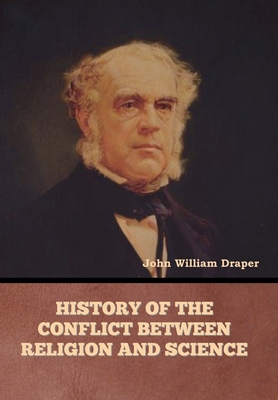You are here
Back to topHistory of the Conflict between Religion and Science (Hardcover)
Description
John William Draper (May 5, 1811 - January 4, 1882) was an English-born American scientist, philosopher, physician, chemist, historian and photographer. He is credited with producing the first clear photograph of a female face (1839-40) and the first detailed photograph of the moon in 1840. He was also the first president of the American Chemical Society (1876-77) and a founder of the New York University School of Medicine.
One of Draper's books, the History of the Conflict between Religion and Science, popularised the conflict thesis proposing intrinsic hostility in the relationship between religion and science. It was widely read and was translated into several languages. His son, Henry Draper, and his granddaughter, Antonia Maury, were astronomers; his granddaughter, Carlotta Maury (Antonia's younger sister), was a paleontologist; his eldest son, John Christopher Draper, was a chemist; and son Daniel Draper de], was a meteorologist. ...
Contributions to the discipline of history: Draper is well known also as the author of The History of the Intellectual Development of Europe (1862), applying the methods of physical science to history, a History of the American Civil War (3 vols., 1867-1870), and a History of the Conflict between Religion and Science (1874). The last book listed is among the most influential works on the conflict thesis, which takes its name from Draper's title. His book examined the relationship between religion and science, dismissing ideas of harmony and presenting the history of science as "not a mere record of isolated discoveries; it is a narrative of the conflict of two contending powers, the expansive force of the human intellect on the one side, and the compression arising from traditional faith and human interests on the other." After outlining the origins of science in ancient Greek philosophy, Draper presented the development of Christianity as leading to repression of science. His argument, aimed at his fellow Protestants, employed anti-Catholic rhetoric, but also said that these "two rival divisions of the Christian church" were "in accord on one point: to tolerate no science except such as they considered agreeable to the Scriptures", and both were liable to "theological odium". The book went through fifty printings in the United States alone, and was translated into ten languages. Professor Ronald Numbers has pointed to Draper's book as a source of popular misconceptions about historical conflict between science and religion, saying that it was "less of a dispassionate history, which it wasn't, than a screed against Roman Catholics" motivated by personal animus at the behavior of his sister, a Catholic nun, regarding the death of his son.
Draper was elected as a member of the American Philosophical Society in 1844. He served as the first president of the American Chemical Society in 1876. He was elected to the National Academy of Sciences in 1877.
